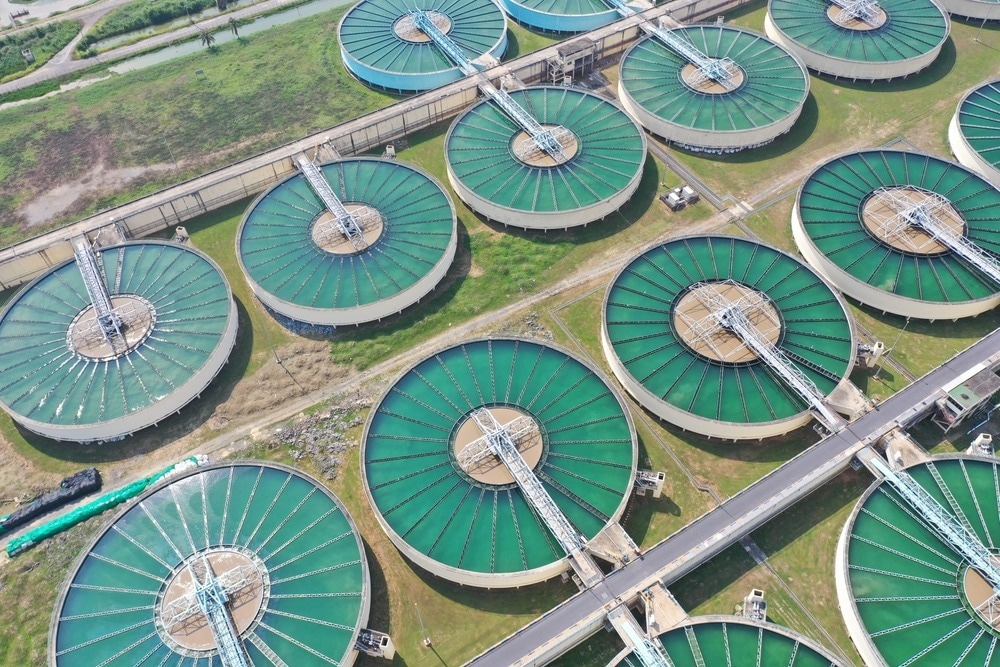Advanced energy storage materials (AESMs) are increasingly gaining attention for more efficient solar desalination. This article discusses the importance of using AESMs in direct solar desalination using solar stills to effectively improve potable water generation.

Image Credit: UNIKYLUCKK/Shutterstock.com
Importance of Advanced Energy Storage Materials in Solar Stills
Solar still desalination primarily depends on evaporation and condensation to purify saline water for potable water generation. In this water treatment process, the incident solar irradiation initially heats the absorber surface and increases the basin area temperature of the solar still.
The conduction of heat between the saline water and the basin leads to an increase in water temperature that eventually results in evaporation. The water vapor is then condensed on the solar still cover and potable/distilled water is produced.
Solar still desalination applications can either be passive or active. No external energy source or equipment is required in the passive technique during water production. However, in the active technique, external systems are implemented to improve water production.
Wind velocity, ambient temperature, and solar irradiance are the key climate factors that impact the solar still performance. Additionally, the utilization of materials that facilitate water evaporation, basin water depth, solar still surface area, and mass flow rate of feed water also affect the solar still efficiency.
Although solar stills are used extensively for freshwater generation, the amount of freshwater produced using solar stills has remained very low. AESMs, such as phase change materials (PCMs), nano-enhanced PCMs, and nanoparticles, can increase freshwater productivity using direct solar desalination.
For instance, the mixing of nanopowders in PCM/nano-enhanced PCM reduces the time of heat transfer rate, which enhances the thermal conductivity of nano-enhanced PCM compared to regular PCM.
Applications of Advanced Energy Storage Materials in Solar Stills
Nanomaterials
Nanomaterials possess a high thermal value, which leads to greater energy savings and a reduction in the time required to produce potable water. Nanomaterials, such as nanoparticles, nanowires, and nanotubes, can be manufactured in required sizes and shapes based on the application.
The nano-coated technique can be used to increase solar desalination evaporation and condensation rates. For instance, nanoparticles with black dye can be added to cover the absorber area to increase the solar irradiation absorption, which leads to greater natural convection.
Studies demonstrated that the use of cobalt oxide nano particle-coated hanging wick thin film, ultrasonic atomizers, and cover cooling on tubular solar stills can lead to 82.5%, 68.14%, and 119.1% improvement in freshwater productivity, thermal performance, and exergy performance, respectively, while the 39.14% maximum cost-saving can be achieved in the freshwater price.
Nano-PCM/nanopowder mixed in base PCM can improve the speed of taking the heat energy during the day and removing the stored energy during low solar radiation. For instance, a 136% increase in freshwater production was achieved compared to conventional solar stills by modifying tray solar stills using reflector mirrors, a nano-PCM, and a wick fin absorber.
Nanofluids, which are typically a mixture of base fluids and nanoparticles, can alter the thermal properties of the fluid and improve the heat transfer and absorption capacity of solar still systems to increase freshwater production.
For instance, the use of cover cooling and copper oxide-water nanofluids in place of only water in solar still has led to 81%, 80.6%, and 112.5% improvements in freshwater productivity, energy efficiency, and exergy efficiency, respectively.
PCM
Removing and receiving thermal energy at a close temperature and high heat energy storage capacity are the major advantages of PCM materials. Thus, both passive and active solar still performance can be improved using PCMs as these materials can absorb the solar intensity heat energy during daytime and use this heat when solar energy is unavailable, such as during cloudy weather conditions and nighttime.
For instance, the utilization of a wick convex basin and PCM in hemispherical solar desalination systems resulted in 87%, 85.6%, and 128.2% increase in freshwater production, energy efficiency, and exergy efficiency, respectively.
Similarly, freshwater productivity increased by 218%, and 63.8% thermal efficiency was achieved using PCM, nanoparticle coatings, and a parabolic solar collector in a tubular solar desalination system.
Porous materials, coupled with energy storage materials/PCM, can also be employed to improve direct solar still desalination productivity. For instance, potable water production was increased by 180% when copper oxide nano-PCM and wick material were used to modify a corrugated tray solar still system.
Recent Studies
In a study published in the Journal of Energy Storage, researchers investigated the feasibility of using nano-enhanced PCM, nano-enhanced absorption, and porous media in solar stills to improve solar desalination performance.
The findings demonstrated that the solar still productivity improved by 55.8% and 49.5% when using copper oxide and aluminum oxide nano-enhanced PCM at 0.3 wt% concentration and copper oxide nano-coating, respectively.
To summarize, the use of AESMs can effectively improve both potable water productivity and energy efficiency of direct solar desalination systems, specifically solar stills. However, more research is required to identify new AESMs and their combinations to achieve greater efficiency in solar still water productivity.
Advanced Materials: Reshaping the Future of Industries
References and Further Readings
Jamil, F., Hassan, F., Shoeibi, S., Khiadani, M. (2023). Application of advanced energy storage materials in direct solar desalination: A state of art review. Renewable and Sustainable Energy Reviews, 186, 113663. https://doi.org/10.1016/j.rser.2023.113663
Shoeibi, S., Kargarsharifabad, H., Rahbar, N. (2021). Effects of nano-enhanced phase change material and nano-coated on the performance of solar stills. Journal of Energy Storage, 42, 103061. https://doi.org/10.1016/j.est.2021.103061
Khawaji, A. D., Kutubkhanah, I. K., & Wie, J. (2008). Advances in seawater desalination technologies. Desalination, 221(1-3), 47-69. https://doi.org/10.1016/j.desal.2007.01.067
Disclaimer: The views expressed here are those of the author expressed in their private capacity and do not necessarily represent the views of AZoM.com Limited T/A AZoNetwork the owner and operator of this website. This disclaimer forms part of the Terms and conditions of use of this website.